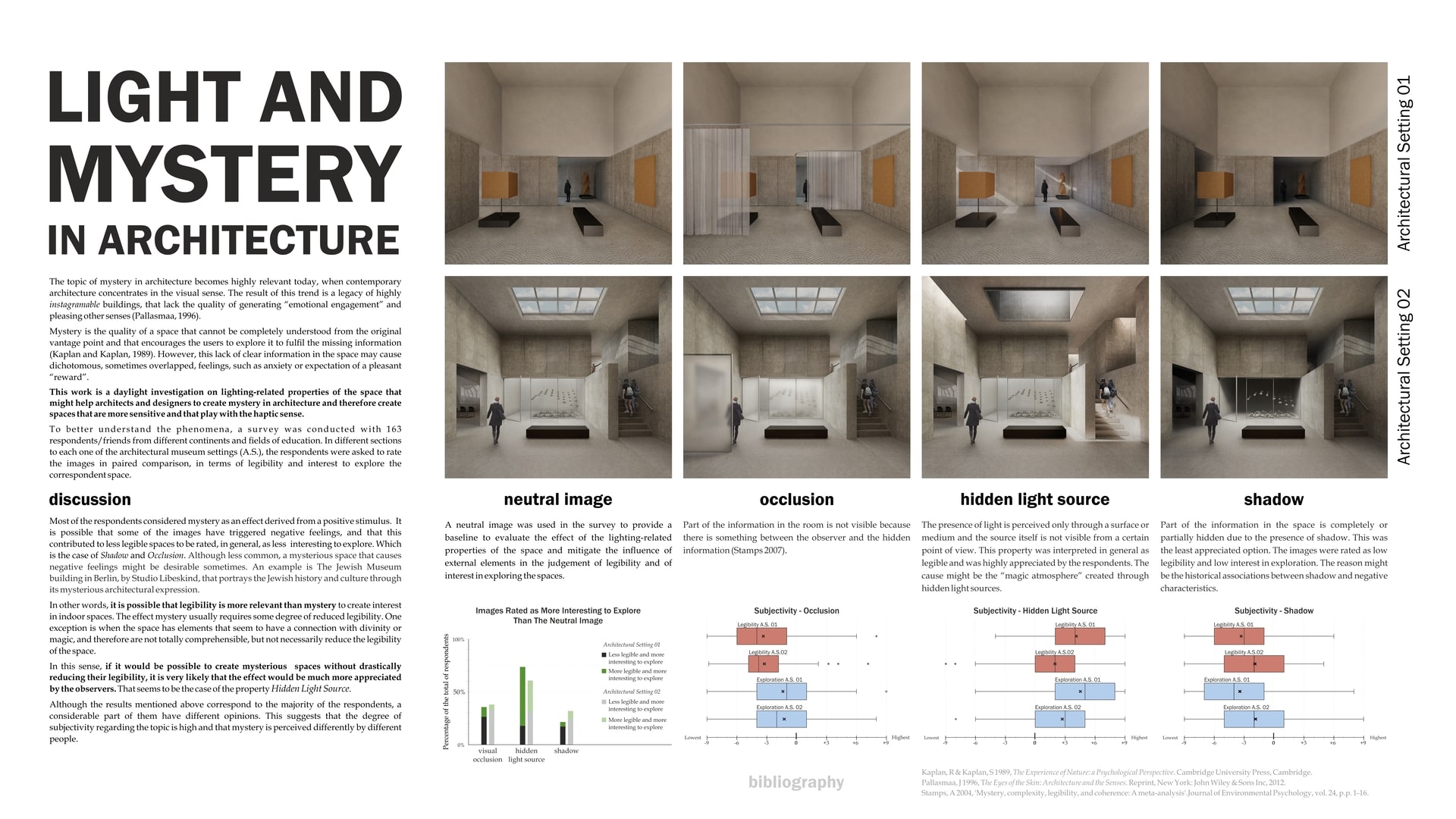Project Description
The topic of mystery in architecture becomes highly relevant today, when contemporary architecture concentrates in the visual sense. The result of this trend is a legacy of highly instagramable buildings, that lack the quality of generating “emotional engagement” and pleasing other senses (Pallasmaa, 1996). Mystery is the quality of a space that cannot be completely understood from the original vantage point and that encourages the users to explore it to fulfil the missing information (Kaplan and Kaplan, 1989). However, this lack of clear information in the space may cause dichotomous, sometimes overlapped, feelings, such as anxiety or expectation of a pleasant “reward”. This work is a daylight investigation on lighting-related properties of the space that might help architects and designers to create mystery in architecture and therefore create spaces that are more sensitive and that play with the haptic sense. To better understand the phenomena, a survey was conducted with 163 respondents/friends from different continents and fields of education. In different sections to each one of the architectural museum settings (A.S.), the respondents were asked to rate the images in paired comparison, in terms of legibility and interest to explore the correspondent space. A neutral image was used in the survey to provide a baseline to evaluate the effect of the lighting-related properties of the space and mitigate the influence of external elements in the judgement of legibility and of interest in exploring the spaces. Lighting-Related Properties of the Space Occlusion: Part of the information in the room is not visible because there is something between the observer and the hidden information (Stamps 2007). Hidden Light Source: The presence of light is perceived only through a surface or medium and the source itself is not visible from a certain point of view. This property was interpreted in general as legible and was highly appreciated by the respondents. The cause might be the “magic atmosphere” created through hidden light sources. Shadow: Part of the information in the space is completely or partially hidden due to the presence of shadow. This was the least appreciated option. The images were rated as low legibility and low interest in exploration. The reason might be the historical associations between shadow and negative characteristics. Discussion Most of the respondents considered mystery as an effect derived from a positive stimulus. It is possible that some of the images have triggered negative feelings, and that this contributed to less legible spaces to be rated, in general, as less interesting to explore. Which is the case of Shadow and Occlusion. Although less common, a mysterious space that causes negative feelings might be desirable sometimes. An example is The Jewish Museum building in Berlin, by Studio Libeskind, that portrays the Jewish history and culture through its mysterious architectural expression. In other words, it is possible that legibility is more relevant than mystery to create interest in indoor spaces. The effect mystery usually requires some degree of reduced legibility. One exception is when the space has elements that seem to have a connection with divinity or magic, and therefore are not totally comprehensible, but not necessarily reduce the legibility of the space. In this sense, if it would be possible to create mysterious spaces without drastically reducing their legibility, it is very likely that the effect would be much more appreciated by the observers. That seems to be the case of the property Hidden Light Source. Although the results mentioned above correspond to the majority of the respondents, a considerable part of them have different opinions. This suggests that the degree of subjectivity regarding the topic is high and that mystery is perceived differently by different people.
